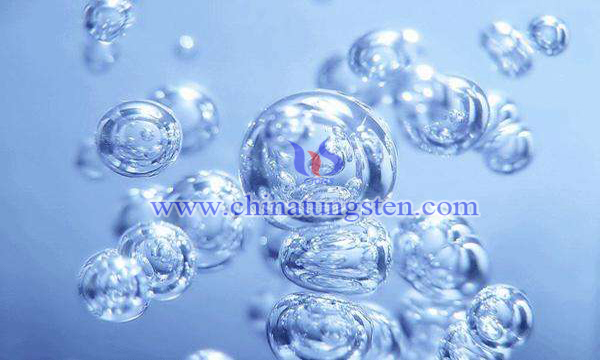Tungsten Carbide Electrocatalytic Hydrogen Evolution
- Details
- Category: Tungsten Information
- Published on Wednesday, 06 February 2019 22:17
Clean energy is one of the most important problems in the sustainable development of human society. Hydrogen is not only an ideal clean energy source, but also an important chemical raw material, which has attracted worldwide attention. On the other hand, hydrogen fuel cell has become one of the hotspots of new energy vehicles in the future due to its high energy, high efficiency and environmental friendliness.

In academia, tungsten carbide has the characteristics of replacing precious metal catalysts such as platinum and good anti-poisoning ability. It has been proved that tungsten carbide has a certain catalytic performance for hydrogen precipitation reaction. Therefore, tungsten carbide has become the most promising main material for hydrogen evolution of electrocatalysts. The research on tungsten carbide catalysts has been fruitful and new academic achievements have emerged. For example, this paper introduces a simple and effective scheme for loading small, uniform and highly dispersed nano-metallic platinum particles on tungsten carbide carriers, which can bring the synergy of tungsten carbide and platinum into play. The effect is very important for the preparation of high performance catalysts. The preparation process includes:
The mixture of ammonium tungstate (AMT) and chloro Platonic acid (H2PtCl6) was mixed in distilled water at a mass ratio of 1: 0.23, and mixed water solution was prepared. The mass concentration of ammonium tungstate in the solution was 5wt%, and the ultrasonic wave was oscillating for 30 minutes at room temperature. Then, the solution was introduced into the spray dryer by spraying with a magnetic stirrer, and the hollow spherical H2WO3/ chloro platicic acid microspheres were obtained. Particle precursor: The precursor after granulation and drying is placed in a quartz boat in a tubular resistance furnace, and hydrogen is injected into the furnace at 400 ~℃ for 2 hours. After calcination and heat treatment, it is heated to 900 ~℃. The mixture of methane and hydrogen is reduced and carbonized. The mass ratio of methane to hydrogen is 20:1, the gas velocity is 0.45m/S, and the reduction carbonization time is 12 hours.
After the reaction, the product was cooled to room temperature with the furnace, and a Platinum-Supported tungsten carbide catalyst was obtained. The mass ratio of platinum to tungsten carbide in the catalyst was 1:10. The samples were detected by XRD, and the samples were mainly composed of WC and PT. SEM images of platinum-loaded tungsten carbide samples show that metal nanoparticles with a diameter of about 10 nm are uniformly dispersed on the surface of tungsten carbide carriers.
The main process is to combine platinum and tungsten carbide by spray drying and gas-solid reaction. The catalyst is a hollow spherical particle with mesoporous structure. Because of the special mesoporous structure of tungsten carbide, the metal nano platinum has high dispersion on the surface and improves the catalytic activity of the catalyst. Most importantly, tungsten carbide not only has the function of carrier, but also has synergistic effect with platinum nanoparticles, which improves the efficiency of the catalyst, reduces the amount of catalyst used and greatly reduces the cost. However, the performance of tungsten carbide is stronger than that of pure platinum.
- Tungsten Carbide Manufacturer & Supplier, Chinatungsten Online: tungsten-carbide.com.cn
- Tungsten News & Prices of China Tungsten Industry Association: www.ctia.com.cn
- Molybdenum News & Price: news.molybdenum.com.cn
- Tel.: 86 592 5129696; Fax: 86 592 5129797; Email: sales@chinatungsten.com



 sales@chinatungsten.com
sales@chinatungsten.com